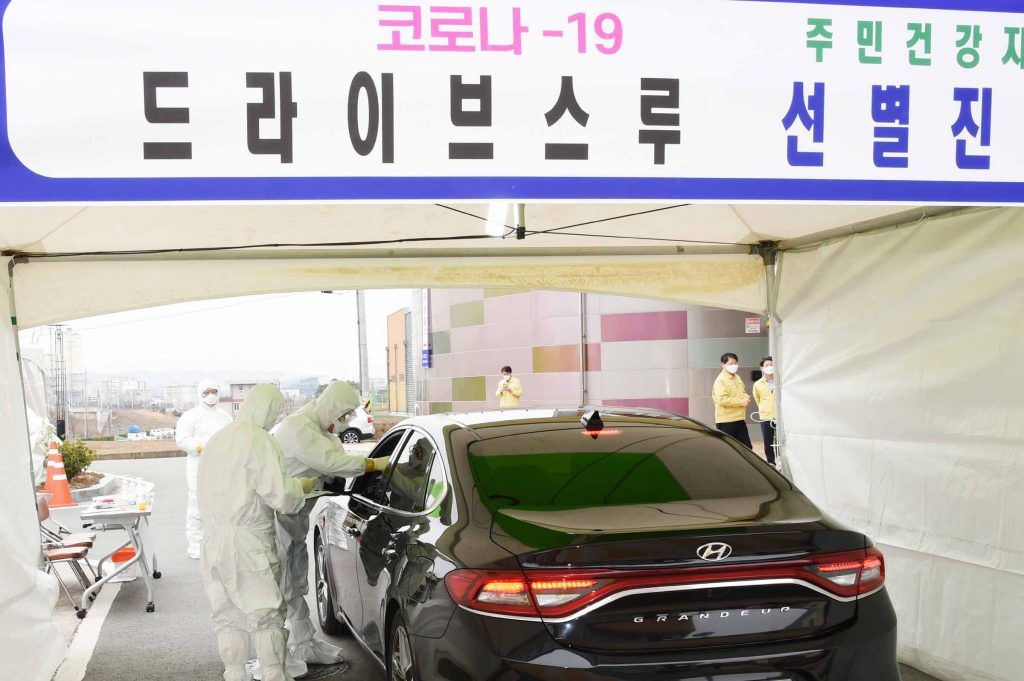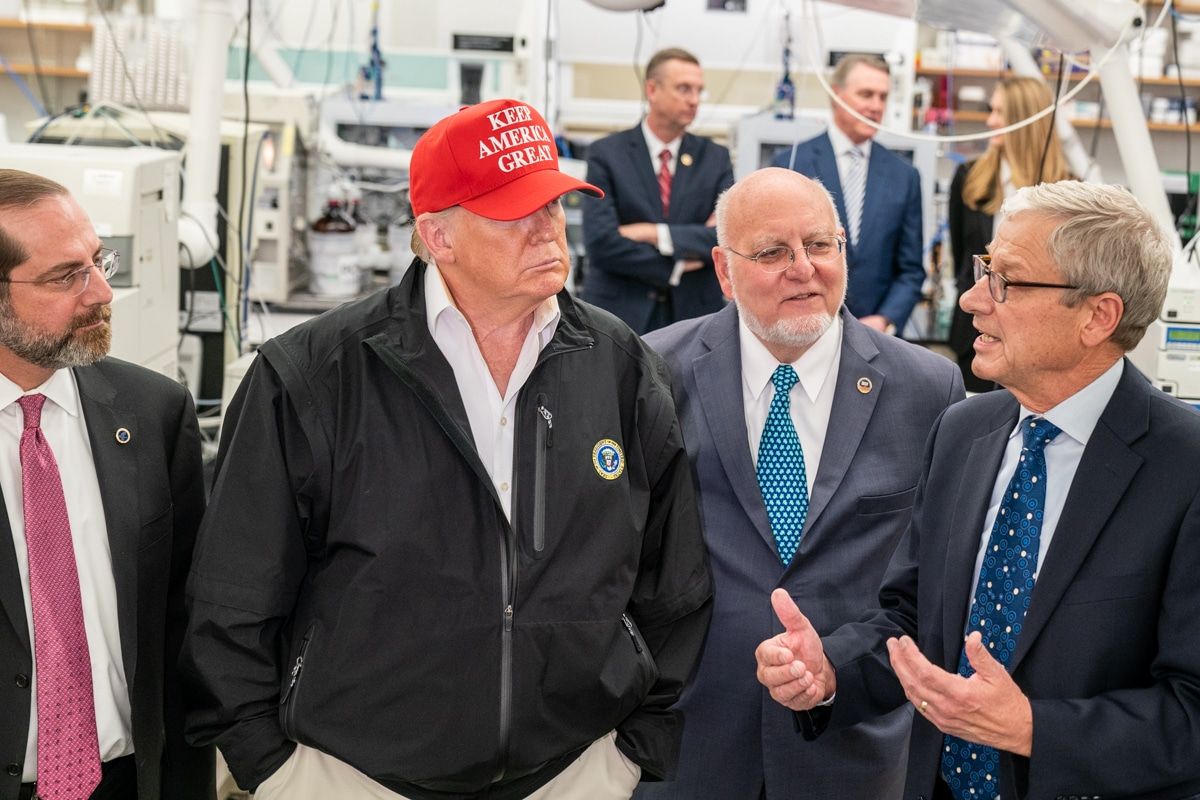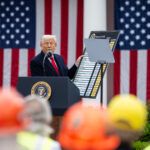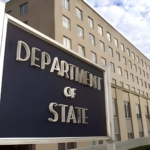What a MERS outbreak taught South Korea, why kids draw the coronavirus, and more: The best disruptive tech stories of 2020
By Matt Field | December 31, 2020
 A drive-thru coronavirus testing facility in South Korea. Credit: Republic of Korea.
A drive-thru coronavirus testing facility in South Korea. Credit: Republic of Korea.
It feels strange to look back on 2020 and try to think of anything good to say about the year, the last 12 months being largely defined by a deadly pandemic and a presidential election that seemed to expose the fragility of US democracy. It’s hard to look past the distressing stuff—the pandemic lockdowns, the agonizingly long vote counts, the unexpected national importance of Wayne County, Michigan’s election canvassing board—and to remember the positive things that happened.
But throughout the cataclysms of 2020, the Bulletin, its expert contributors, and its staff produced excellent work. Here are a few stories that are among the best we produced within the category we call disruptive technology.
Why is tear gas banned in war but not from peaceful protests?
Black Lives Matter protesters this summer were often met with a militarized law enforcement response. Authorities frequently turned to riot-control agents that the US military isn’t allowed to use against adversaries on the battlefield. President Donald Trump seemed to thrill in these shows of force. “They got out and they were there in the houses, and they walked right down the street, knocking them out with tear gas, tear gas,” he said of one operation. I talked to University of Massachusetts Lowell professor Nicholas Evans, who researches national security and emerging technology.
South Korea learned its successful Covid-19 strategy from a previous coronavirus outbreak: MERS
Both the United States and South Korea announced their first confirmed COVID-19 case on the same January day. Since then, South Korea has fared much better against the pandemic. Biodefense scholar HyunJyung Kim wrote that South Korea’s experience with an outbreak of another coronavirus, MERS-CoV, may have helped the country cope better with COVID-19.
The vaccine and the satellite: A tale of two Sputniks
Facing a dreary economy and sagging approval ratings, Russian President Vladimir Putin needed a boost over the summer. And what better way to add a little pep to your step than have your country announce the world’s first registered COVID-19 vaccine–never mind that Russia’s inoculation, dubbed Sputnik V, hadn’t undergone large-scale clinical testing to ensure safety and efficacy.
In a prescient article published about a week before the Nov. 3 presidential election, Bulletin editor Dan Drollette Jr. took a look at what might happen if Trump decided not to acknowledge a defeat at the polls. He talked to Amherst College professor Lawrence Douglas about the fragile mechanics of US electoral politics. A month and a half after the election, Trump had yet to concede his loss.
Keep your mask on: Why a coronavirus vaccine won’t be the panacea many hope for

Eileen Choffnes, a former government scientist and expert on microbial threats, called for people to manage their expectations for how quickly a vaccine would end the pandemic. It will be at least several more months before a vaccination campaign can bring COVID-19 to bear. In the meantime, mask up.
Black plague, Spanish flu, smallpox: All hold lessons for coronavirus
California State University San Marcos historian Ibrahim Al-Marashi wrote on previous epidemics, including the Black Death and the 1918 influenza, and what valuable lessons their histories hold for dealing with the COVID-19 pandemic.
Once the COVID-19 outbreak began to grow in Wuhan, China, infection prevention and biodefense expert Saskia Popescu questioned why preparing for epidemics, which history suggests occur frequently, seemed to be such a low priority for the US government.
Trump is a “superspreader.” Of misinformation
In the past few months, Trump and multiple people in his orbit have been diagnosed with COVID-19. While it’s unclear whether Trump spread the virus to anyone, Bulletin editor Dawn Stover took a look at something the president definitely was spreading: misinformation.
Pandemic failure or convenient scapegoat: How did WHO get here?
Thomas Gaulkin, a Bulletin editor, took a deep dive into the history of the World Health Organization—the global health organization that’s come under relentless criticism since the start of the pandemic. Gaulkin’s piece was so authoritative it even got a plug on John Oliver’s Last Week Tonight show.
Coronavirus overview: How political ideology and governmental incompetence can kill you

Bulletin editor-in-chief John Mecklin wrote in March that the United States’s failure to control the COVID-19 pandemic was “reflective of a larger problem—the erosion of the international infrastructure for dealing with major global threats in general.” Mecklin points to a problem, which, if it continues unabated, bodes poorly for how the world will avert climate catastrophe or even nuclear war.
Will the WHO call for an international investigation into the coronavirus’s origins?
Filippa Lentzos, an expert on biosecurity and governance of emerging technologies, wrote about the call from Australia and other countries for the World Health Organization to investigate the origins of the coronavirus pandemic, an inquiry she feared would not answer all the necessary questions.
Kids are drawing pictures of the new coronavirus. That’s a good thing.
In another great piece, Gaulkin examined how kids were coping with the pandemic by drawing anthropomorphic pictures of SARS-CoV-2, the dreaded coronavirus done up with smiles. “[A]rt and other creative outlets play an important role in helping children process what’s going on around them,” Gualkin wrote.
Old hatreds fuel online misinformation about COVID-19 in South Asia
A group of students at Princeton University and elsewhere have been working with Princeton professor Jake Shapiro to catalogue the false pandemic narratives that have been spreading online in countries around the world. They’ve drawn from their database of findings to produce several columns for the Bulletin, including this excellent one on the link between COVID-19 misinformation and long-standing tensions among religious groups in South Asia.
Hear, see, speak no COVID: Why the Trump administration is bungling the response to the pandemic
George Mason University professor Greg Koblentz and Popescu, the infection prevention and biodefense expert, wrote about what they call the Trump administration’s “hear no COVID, see no COVID, speak no COVID” response to the deadly pandemic. The authors’ new take on an old Japanese proverb really helps you remember all the ways the US pandemic response has been a failure.
In earlier pandemic days, the idea that COVID-19 was invented as a bioweapon just would not die. Politicians around the world, including US Senator Tom Cotton kept the false conspiracy theory alive, using it to bolster their own ideological agenda. Bulletin editor John Krzyzaniak and I wrote about the troubling trend in March.
The brain-computer interface is coming and we are so not ready for it
Journalist Paul Tillis looked at the implications of a new technology being developed to connect brains to computers. While brain-computer interfaces hold the potential to help paralyzed patients move again, they may also allow augmented soldiers to control drone fleets with their minds or hackers to read a person’s thoughts; you take the good with the bad.
In a partnership between the Bulletin and The New Yorker, former Bulletin editor Elisabeth Eaves wrote an in-depth account of a new government disease research facility in the middle of Kansas, a setting that has concerning implications for the safety of US biodefense facilities.
Together, we make the world safer.
The Bulletin elevates expert voices above the noise. But as an independent nonprofit organization, our operations depend on the support of readers like you. Help us continue to deliver quality journalism that holds leaders accountable. Your support of our work at any level is important. In return, we promise our coverage will be understandable, influential, vigilant, solution-oriented, and fair-minded. Together we can make a difference.
Keywords: Coronavirus, Donald Trump, South Korea, WHO, best of 2020, brain-computer interface, tear gas
Topics: Disruptive Technologies















